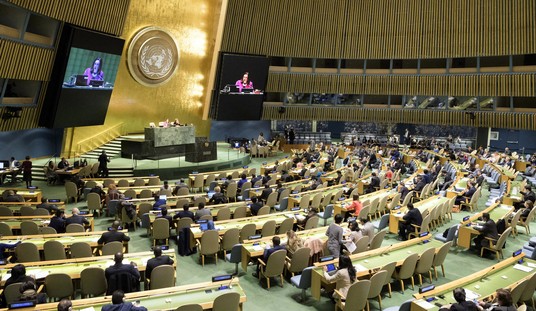Liberals and eco-warriors in the United States often point to Germany as a model for the future when it comes to questions of renewable energy. That’s because the Germans have massively increased their output of wind and solar resources to the point where they account for nearly a third of their total production. During periods when demand and wind/solar supply peak at the same time they have briefly managed to supply virtually the entire country’s needs from such resources.
That’s great news, right? Well… if that’s the case, why are they halting construction of any further wind farms? (Daily Caller News Foundation)
Germany plans to stop building new offshore wind turbines to lower the costs of electricity and prop up its ailing power grid, according to a revision to a new energy law.
The revision of the law will come into force at the start of 2017, and will sharply limit the construction of new offshore wind farms, reports Reuters. The motivation behind the law is that Germany’ over-reliance on wind power “has pushed up electricity costs in Europe’s biggest economy and placed a strain on its grids,” the article reads.
“Germany now has electric rates for consumers that are among the highest in the world. Energy poverty has become a reality for millions of German families,” Myron Ebell, director of the Center for Energy and Environment at the free market Competitive Enterprise Institute, told The Daily Caller News Foundation.
Being an All of the Above Energy sort of guy, I see good news in the advances that Germany has made. They can’t do too much with solar, but they do have access to some good spots for wind and they make use of it. Unfortunately, there are two elements of that story which serve as cautionary tales. The first is one which will be familiar to American consumers and that’s the pricing problem. Germany is able to get so much wind energy because the government subsidizes and mandates such activity on a massive scale. Through those efforts they have managed to produce quite a bit of electricity, but the price is outrageous compared to natural gas or other fossil fuels. Those costs have been adding up and are being noticed during challenging economic times in that part of the world.
The second aspect is a bit more technical, but still has relevance to the renewable energy question in the United States. Wind energy production is not stable or predictable. When there’s a lot of wind you get a lot of juice, but when the wind stops, so does the flow of current. The problem with this model is that on a national scale, your supply has to be able to match your demand. If you are producing too much energy during low demand periods you can actually damage the grid. If you produce too little during peak demand times you get brownouts. That’s what’s been happening in Germany and no doubt led to this decision to stop putting up more turbines.
Keep that in mind here in America where we have a vastly larger and more complex grid. We can’t operate this huge system without a predictable energy supply which can be regulated to match fluctuations in demand. Wind can be a great booster to the energy supply in the areas where it can be produced, but the technology remains too expensive in most cases to stand on its own feet and the wind still has an unpleasant tendency to stop blowing sometimes.









Join the conversation as a VIP Member